 |
by Rich Brueckner on (#E7N4)
Today the OpenMP Architecture Review Board (ARB) announced the full line-up of world-class keynote speakers, technical presentations, tutorials and panel sessions to be hosted at the inaugural OpenMPCon Developer Conference, which will take place Sept. 28-30 in Aachen, Germany.The post Speaker Lineup Announced for OpenMPCon Developer Conference appeared first on insideHPC.
|
 Inside HPC & AI News | High-Performance Computing & Artificial Intelligence
Inside HPC & AI News | High-Performance Computing & Artificial Intelligence
| Link | https://insidehpc.com/ |
| Feed | http://insidehpc.com/feed/ |
| Updated | 2025-12-15 10:31 |
 |
by MichaelS on (#E75J)
While large scale supercomputing centers continue to push the boundaries of the ability to process numerical information, either HPC like or Big Data like, a concern is the ability for the datacenter to power and cool such large installations. The new Cray XC Supercomputer is an energy efficient advancement to the traditional cluster.The post Energy Efficient Supercomputing appeared first on insideHPC.
|
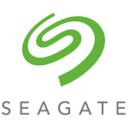 |
by staff on (#E6FA)
Today Seagate announced it is integrating IBM Spectrum Scale software, based upon GPFS technology, with its ClusterStor HPC storage to deliver a new software defined storage appliance. The new appliance will help users manage the demands of data-intensive workloads, such as genomic research, computer aided design, digital media, data analytics, financial model analysis and electronic design simulations.The post Seagate Adopts IBM Spectrum Scale, based on GPFS appeared first on insideHPC.
|
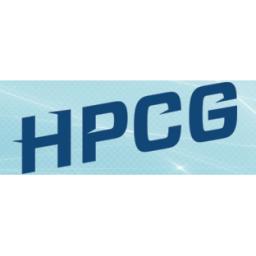 |
by Rich Brueckner on (#E61K)
The latest High Performance Conjugate Gradients (HPCG) Benchmark list will be announced in a special session this week at ISC 2015. This is the third list produced for the emerging benchmark designed to complement the traditional High Performance Linpack (HPL) benchmark used as the official metric for ranking the Top 500 systems.The post Latest HPCG Performance List Complements TOP500 appeared first on insideHPC.
|
 |
by Rich Brueckner on (#E5RJ)
Today Numascale announced record-breaking results from a shared memory system running the McCalpin STREAM Benchmark, a synthetic benchmark program that measures sustainable memory bandwidth and the corresponding computation rate for simple vector kernels.The post Numascale Sets New World Record on STREAM Benchmark appeared first on insideHPC.
|
 |
by staff on (#E5RK)
Today IBM along with Nvidia and two U.S. Department of Energy National Laboratories today announced a pair of Centers of Excellence for supercomputing – one at the Lawrence Livermore National Laboratory and the other at the Oak Ridge National Laboratory. The collaborations are in support of IBM’s supercomputing contract with the U.S. Department of Energy. They will enable advanced, large-scale scientific and engineering applications both for supporting DOE missions, and for the Summit and Sierra supercomputer systems to be delivered respectively to Oak Ridge and Lawrence Livermore in 2017 and to be operational in 2018.The post IBM and NVIDIA Launch Centers of Excellence at ORNL and LLNL appeared first on insideHPC.
|
by staff on (#E5GH)
Today Penguin Computing announced the availability of their Open Compute Project (OCP) compliant Tundra server family based on Cavium’s 64-bit ARMv8 ThunderX workload optimized processors.The post Penguin Computing Boosts Tundra Open Compute Servers with ThunderX Processors appeared first on insideHPC.
 |
by staff on (#E4XB)
Today Nice Software in Italy announced the release of EnginFrame 2015, the most powerful and easy-to-use web-based front end for accessing technical and scientific applications in the cloud.The post NICE Releases EnginFrame 2015 appeared first on insideHPC.
|
by Rich Brueckner on (#E5GJ)
"As data explodes in volume, velocity and variety, and the processing requirements to address business challenges become more sophisticated, the line between traditional and high performance computing is blurring,†said Bill Mannel, vice president and general manager, HPC and Big Data, HP Servers. “With this alliance, we are giving customers access to the technologies and solutions as well as the intellectual property, portfolio services and engineering support needed to evolve their compute infrastructure to capitalize on a data driven environment."The post Slidecast: HPC & Big Data Update from HP appeared first on insideHPC.
 |
by staff on (#E5EZ)
HP is bringing Intel's Scalable System Framework to its HP Apollo servers.The post HP and Intel Team on Scalable System Framework appeared first on insideHPC.
|
by staff on (#E55G)
Today Allinea Software announced that their Allinea Forge development tool suite is now available for ARM platforms. The tool suite, renowned for its ability to master multi-process and multi-threaded Linux applications, includes the powerful performance profiler Allinea MAP and debugger Allinea DDT.The post Allinea Releases ARM 64-bit Development Tool Suite appeared first on insideHPC.
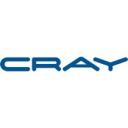 |
by Rich Brueckner on (#E52S)
Today Cray announced the Company has been awarded a contract to provide a Cray XC40 supercomputer to the Texas Advanced Computing Center (TACC). This contract marks the first ever Cray supercomputer to be installed at TACC.The post TACC to Acquire Cray XC40 Supercomputer appeared first on insideHPC.
|
 |
by Rich Brueckner on (#E51Q)
In this video, Gilad Shainer from Mellanox discusses how the company's off-load model of InfiniBand reduces overhead on the CPU and provides maximum application performance.The post Offload vs Onload: How Mellanox Champions Flexibility and Scalability appeared first on insideHPC.
|
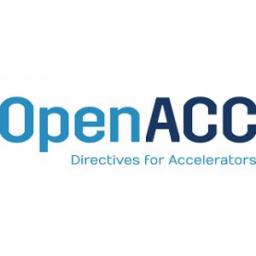 |
by Rich Brueckner on (#E4Z9)
Over at the Nvidia Blog, Paresh Kharya writes that the company is releasing its OpenACC Toolkit as a free download for Academia.The post OpenACC Toolkit is now Free for Academia appeared first on insideHPC.
|
 |
by Rich Brueckner on (#E4Y8)
Today SGI announced a 30 percent increase in TOP500 systems and new additions to their SGI UV family of large-memory supercomputers.The post Latest Xeon Processors come to SGI UV In-Memory Supercomputers appeared first on insideHPC.
|
 |
by Rich Brueckner on (#E4VQ)
The latest TOP500 list of the world's fastest supercomputers was released this morning at the ISC 2015 conference in Frankfurt, Germany. And while there was little change in the upper ranks of the list, the TOP500 continues to offer insight into the latest HPC trends.The post 10 Fastest Machines Look Familiar on New TOP500 List appeared first on insideHPC.
|
by Rich Brueckner on (#E4TJ)
Today E4 Computer Engineering announced their first orders for Cavium ThunderX-based ARKA servers.The post E4 Computer Engineering Accelerates ARM with GPUs appeared first on insideHPC.
 |
by staff on (#E2RS)
Jim Collins writes that a research team from Argonne National Laboratory and the University of Chicago is using the Mira supercomputer to investigate the effectiveness of dynamically downscaled climate models.The post Dynamically Downscaling Climate Models appeared first on insideHPC.
|
by Rich Brueckner on (#E2PC)
In this video from the 2015 OFS Workshop, Liran Liss from Mellanox presents: RDMA Container Support.The post Video: RDMA Container Support appeared first on insideHPC.
 |
by Rich Brueckner on (#E0F5)
In this podcast, the Radio Free HPC team looks at how the KatRisk startup is using GPUs on the Titan supercomputer to calculate global flood maps. "KatRisk develops event-based probabilistic models to quantify portfolio aggregate losses and exceeding probability curves. Their goal is to develop models that fully correlate all sources of flood loss including explicit consideration of tropical cyclone rainfall and storm surge."The post Radio Free HPC Looks at Supercomputing Global Flood Maps appeared first on insideHPC.
|
by staff on (#E09E)
Today Mellanox announced the growing industry-wide adoption of its end-to-end EDR 100Gb/s InfiniBand solutions.The post Mellanox EDR 100Gb/s InfiniBand Gains Momentum appeared first on insideHPC.
by staff on (#DX2P)
Today Atos announced a contract with the CEA French Alternative Energies and Atomic Energy Commission develop a 25 Petaflop supercomputer. Called Tera1000, the new supercomputer will serve as a prototype for a follow-on exascale system.The post CEA Teams With Atos to Develop Exaflop Supercomputer appeared first on insideHPC.
by Rich Brueckner on (#DWW8)
In this video, Professors Jean Frechet and David Keyes describe their vision for KAUST's new Shaheen II Cray XC40 supercomputer. "​The initial configuration of Shaheen II will feature nearly 200,000 x86 processor cores. At initial delivery, anticipated in March 2015, Shaheen II will deliver over 5 petaflops of peak performance, with 17.6 petabytes of Sonexion Lustre storage and greater than 790 terabytes of memory."The post David Keyes and Jen Frechet on how Shaheen II Supercomputer will Drive Research appeared first on insideHPC.
 |
by staff on (#DWSF)
In this special guest feature, John Kirkley writes that Intel is using its new Omni-Path Architecture as a foundation for supercomputing systems that will scale to 200 Petaflops and beyond.The post A New Direction in HPC System Fabric: Intel’s Omni-Path Architecture appeared first on insideHPC.
|
 |
by Rich Brueckner on (#DWPF)
Today CoolIT Systems announced that the company’s CEO & CTO, Geoff Lyon, has been selected as a finalist for Ernst & Young’s Entrepreneur Of The Year Award 2015 in the Prairies region.The post Geoff Lyon from CoolIT Systems up for Entrepreneur Of The Year appeared first on insideHPC.
|
 |
by Rich Brueckner on (#DWM7)
Today Asetek announced plans to showcase its RackCDU warm water liquid cooling solutions at the ISC 2015 conference July 12–16 in Frankfurt.The post Asetek to Showcase Liquid Cooling at ISC 2015 appeared first on insideHPC.
|
 |
by staff on (#DWJ7)
Today Mellanox announced that the Jülich Supercomputing Centre has selected the company's EDR 100Gb/s solution to accelerate its new large-scale supercomputer. Called JURECA, the new 1.8 Petaflop system will be developed T-Platforms and ParTec to include Mellanox’s end-to-end EDR 100Gb/s solutions, consisting of ConnectX-4 adapters, Switch-IB switch systems, LinkX cables, and HPC-X software.The post Mellanox EDR IB to Power 1.8 Petaflop Jureca System at Jülich appeared first on insideHPC.
|
 |
by MichaelS on (#DT8M)
In order to speed up applications, a developer must learn to take advantage of the multiple threads, cores and sockets found on a single server or on a cluster. Just hoping for a faster CPU anymore won’t cut it.The post Why Modernize Code? appeared first on insideHPC.
|
 |
by Rich Brueckner on (#DSYQ)
The Second Workshop on Accelerator Programming using Directives (WACCPD) has issued its Call for Papers. Co-located with SC15, the workshop takes place November 16 in Austin.The post Call For Papers: Workshop on Accelerator Programming using Directives appeared first on insideHPC.
|
by Rich Brueckner on (#DSK1)
"Modern HPC systems are complex due to the sheer number of components that comprise them. With this complexity comes the reality of failures. One particular damaging and little understood type of failure is silent data corruption (SDC). SDC occurs when program state changes without intervention of the application or the system. An understanding of how applications handle state perturbations and how these corrupted values propagate through HPC applications is key to mitigating its effects. In this talk, we present our results from fault injection experiments on an Algebraic Multigrid linear solver."The post Video: Effect and Propagation of Silent Data Corruption in HPC Applications appeared first on insideHPC.
 |
by Rich Brueckner on (#DSHA)
Today Panasas announced ActiveStor 18, its latest generation hybrid scale-out NAS appliance. By adopting 8 terabyte drive technology, ActiveStor 18 increases scalability to more than 20 petabytes and 200 gigabytes per second. According to Panasas, ActiveStor 18 also offers increased CPU power and twice the storage cache capacity to further accelerate mixed workload performance.The post Panasas Rolls Out ActiveStor 18 Scale-out NAS Appliance appeared first on insideHPC.
|
 |
by Rich Brueckner on (#DSAM)
Today IBM Research announced that working with alliance partners at SUNY Polytechnic Institute’s Colleges of Nanoscale Science and Engineering it has produced the semiconductor industry’s first 7nm node test chips with functional transistors. According to IBM, the breakthrough underscores the company's continued leadership and long-term commitment to semiconductor technology research.The post IBM Research Alliance Develops First 7nm Node appeared first on insideHPC.
|
 |
by staff on (#DPP3)
Today IBM announced that the company is now offering Nvidia Tesla K80 GPU accelerators on bare metal cloud servers. With the new offering, IBM Cloud is bringing high-speed performance to the SoftLayer cloud infrastructure, enabling companies to build supercomputing clusters without having to expand their existing technology infrastructure.The post Nvidia K80 GPUs Available on IBM Cloud appeared first on insideHPC.
|
 |
by Rich Brueckner on (#DPJF)
Today ISC 2015 forecasted that a record 2600 HPC enthusiasts from 53 countries and 153 exhibitors will make their way to Frankfurt for the ISC High Performance conference and exhibition. Registration is still open for the event, which takes place July 12-16 at the Frankfurt Messe in Hall 3.The post ISC 2015 to Draw 2600 HPC Enthusiasts Next Week appeared first on insideHPC.
|
 |
by Rich Brueckner on (#DPG9)
"Numerical simulations on supercomputers play an ever more important role in astrophysics. They have become the tool of choice to predict the non-linear outcome of the initial conditions left behind by the Big Bang, providing crucial tests of cosmological theories. However, the problem of galaxy and star formation confronts us with a staggering multi-physics complexity and an enormous dynamic range that severely challenges existing numerical methods."The post Video: Simulating Cosmic Structure Formation appeared first on insideHPC.
|
 |
by Rich Brueckner on (#DPB8)
“The AMD FirePro S9170 server GPU can accelerate complex workloads in scientific computing, data analytics, or seismic processing, wielding an industry-leading 32GB of memory. We designed the new offering for supercomputers to achieve massive compute performance while maximizing available power budgets.â€The post New AMD FirePro S9170 GPU Sports 32GB Memory for HPC appeared first on insideHPC.
|
 |
by staff on (#DNNH)
Today Bright Computing announced that the company will roll out an enhanced partner program next week at ISC 2015 in Frankfurt.The post Bright Computing Enhances Partner Program appeared first on insideHPC.
|
 |
by Rich Brueckner on (#DKKN)
In this slidecast, Einar Rustad from Numascale describes how the company achieved a world-record on the McCalpin STREAM benchmark using their innovative scale-out to scale-up architecture. The benchmark measures sustainable memory bandwidth and the corresponding computation rate for simple vector kernels.The post Slidecast: Numascale Achieves Record STREAM Benchmark appeared first on insideHPC.
|
 |
by Rich Brueckner on (#DKE2)
"HPC is transforming our everyday lives, as well as our not-so-ordinary ones. From nanomaterials to jet aircrafts, from medical treatments to disaster preparedness, and even the way we wash our clothes; the HPC community has transformed the world in multifaceted ways."The post HPC Transforms for Researchers of Global Climate Change appeared first on insideHPC.
|
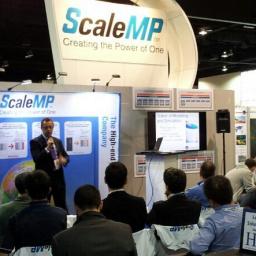 |
by staff on (#DKC3)
Today ScaleMP announced it is teaming with leading vendors at the ISC 2015 in Frankfurt to showcase the ability of very large memory systems to handle the most demanding memory-intensive applications.The post ScaleMP Teams with Lenovo on Big Memory Systems appeared first on insideHPC.
|
 |
by staff on (#DK2N)
Today JISC in the U.K. announced that Rolls-Royce is the first company to join its industrial supercomputing initiative. Designed to break down barriers between industry and academia, JISC will provide Rolls-Royce with easy access to supercomputing equipment at the Engineering and Physical Sciences Research Council (EPSRC) HPC Midlands.The post Rolls-Royce Joins JISC Industrial Supercomputing Initiative appeared first on insideHPC.
|
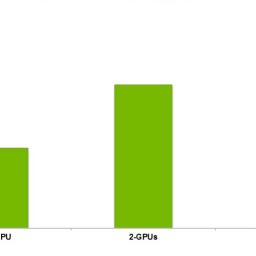 |
by Rich Brueckner on (#DJZ0)
Today Nvidia updated its GPU-accelerated deep learning software to accelerate deep learning training performance. With new releases of DIGITS and cuDNN, the new software provides significant performance enhancements to help data scientists create more accurate neural networks through faster model training and more sophisticated model design.The post Nvidia Speeds Up Deep Learning Software appeared first on insideHPC.
|
 |
by Rich Brueckner on (#DJ2J)
In the third report from the PRACEdays15 meeting in Dublin, Tom Wilkie from Scientific Computing World discusses how supercomputing can be made simpler for smaller companies.The post Making HPC Simple for Small Companies appeared first on insideHPC.
|
 |
by Rich Brueckner on (#DFQ6)
In this video, Kyle Lamb from the Infrastructure Team at Los Alamos National Lab describes the unique challenges he faces at a facility known for being at the forefront of technology. Kyle addresses the future of storage for High Performance Computing and the ways LANL is partnering with Seagate to tackle the changes on the horizon.The post Video: How Seagate Collaborates with LANL on HPC appeared first on insideHPC.
|
by Rich Brueckner on (#C01J)
EOFS and OpenSFS have issued their Call for Participation for the LAD’15 event, which takes place Sept. 22-23 in Paris, France.The post Call for Presentations: LAD’15 in Paris appeared first on insideHPC.
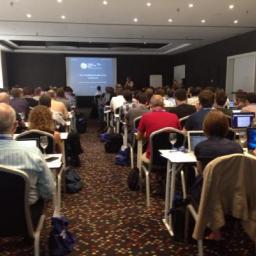 |
by Rich Brueckner on (#DFET)
Top researchers from six of the largest supercomputing centers got together in Barcelona at the beginning of this month for the Joint Laboratory for Extremeâ€Scale Computing (JLESC) to discuss the challenges for future supercomputers.The post Top HPC Centers Meet in Barcelona at JLESC appeared first on insideHPC.
|
 |
by Rich Brueckner on (#DERF)
In this NPR podcast, Dag Lohmann describes how his startup company called KatRisk is using the Titan supercomputer at ORNL to create detailed flood maps for use by insurance companies.The post Podcast: Supercomputing Flood Maps Using the Titan Supercomputer appeared first on insideHPC.
|
 |
by Rich Brueckner on (#DENY)
VMware is seeking an HPC Solutions Architect in our Job of the Week.The post Job of the Week: HPC Solutions Architect at VMware appeared first on insideHPC.
|
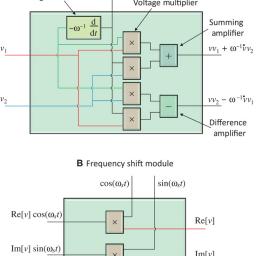 |
by Rich Brueckner on (#DCN0)
Over at Scientific Advances, a newly published paper describes a new high-efficiency computing paradigm called memcomputing. Modeled after the human brain, a memprocessor processes and stores information within the same units by means of their mutual interactions. Now, researchers have built a working prototype.The post Researchers Build Memcomputing Prototype appeared first on insideHPC.
|
 |
by Rich Brueckner on (#DBYX)
Bill Gropp from the University of Illinois at Urbana-Champaign presented this talk at the Blue Waters Symposium. "The large number of nodes and cores in extreme scale systems requires rethinking all aspects of algorithms, especially for load balancing and for latency hiding. In this project, I am looking at the use of nonblocking collective routines in Krylov methods, the use of speculation and large memory in graph algorithms, the use of locality-sensitive thread scheduling for better load balancing, and model-guided communication aggregation to reduce overall communication costs. This talk will discuss some current results and future plans, and possibilities for collaboration in evaluating some of these approaches."The post Video: Algorithms for Extreme-Scale Systems appeared first on insideHPC.
|